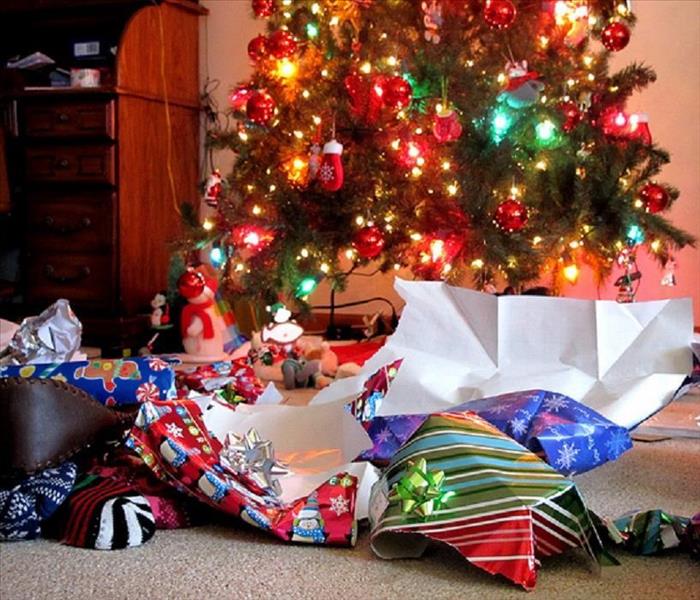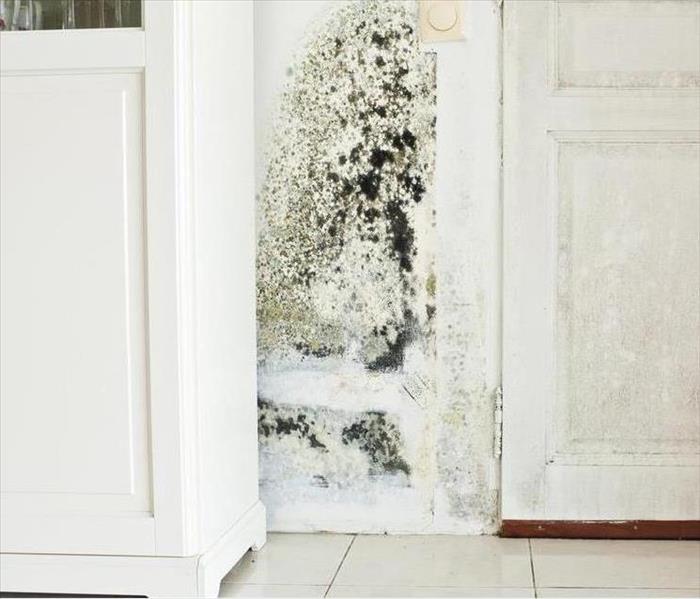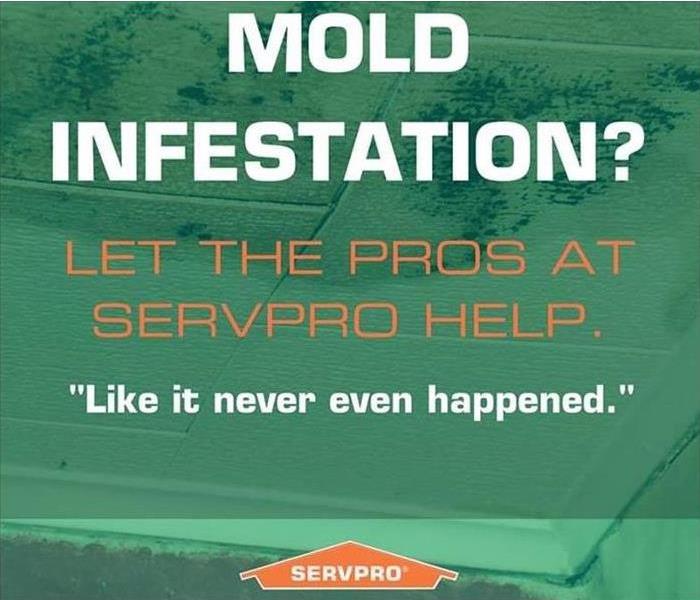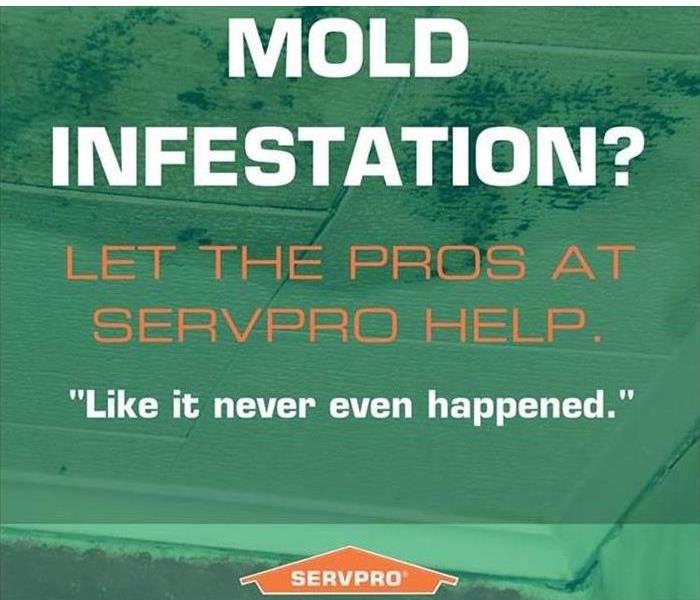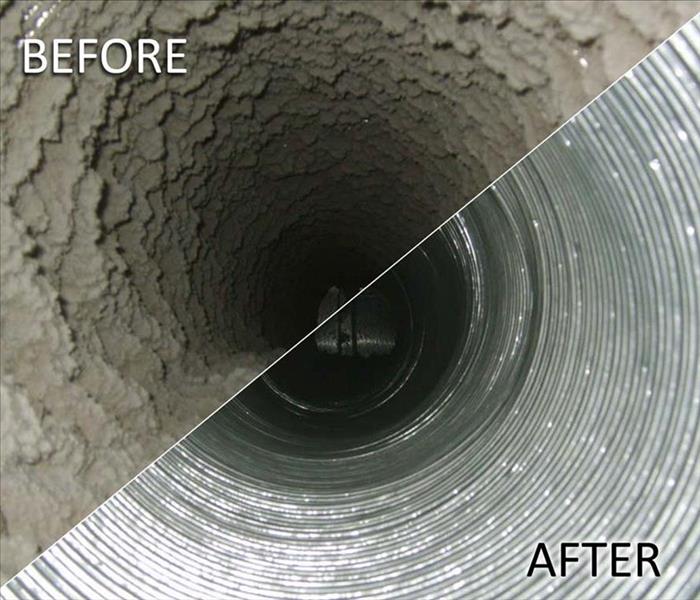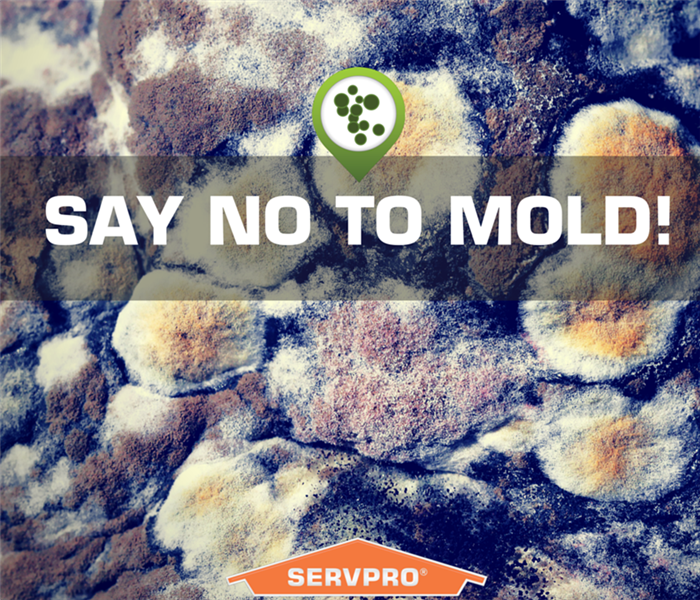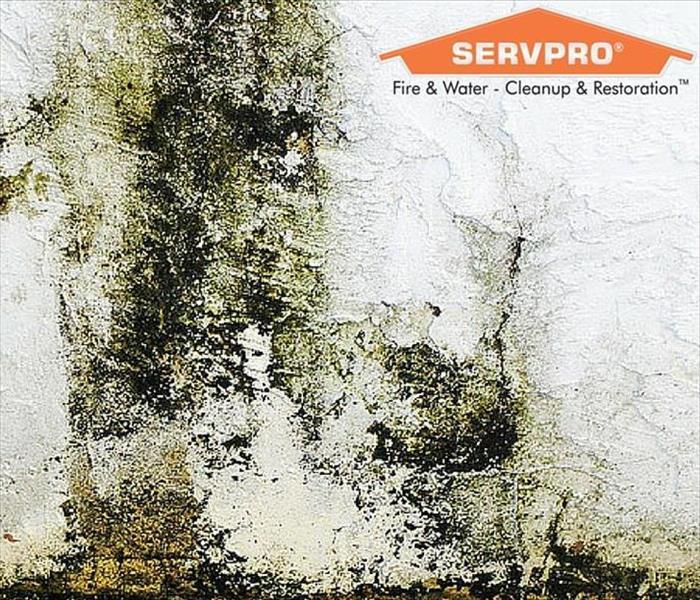Recent Mold Remediation Posts
Mold Damage in Syosset Laundry Rooms - Risks and Solutions
11/26/2024 (Permalink)
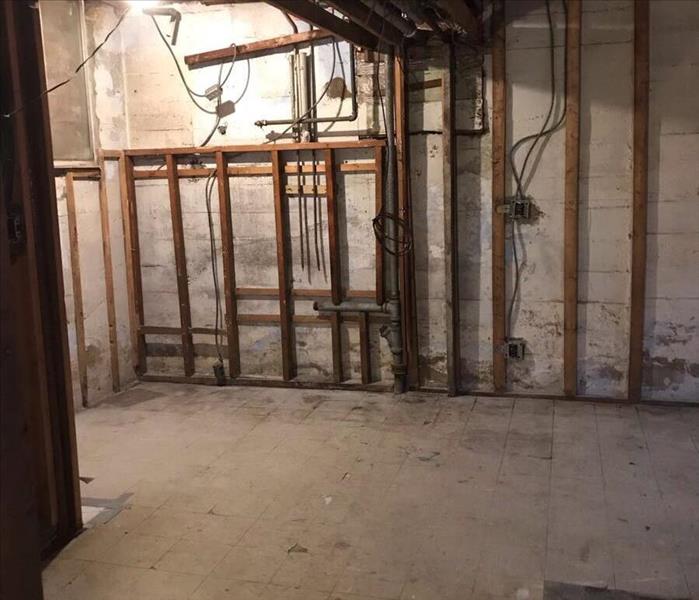 Moisture in a laundry room or basement often leads to the removal of walls due to mold growth. SERVPRO helps Syosset homeowners!
Moisture in a laundry room or basement often leads to the removal of walls due to mold growth. SERVPRO helps Syosset homeowners!
How Mold in Laundry Rooms Can Impact You and Your Home
Microbial damage is a common issue in many homes, especially in spaces like laundry rooms, where moisture accumulates easily. Between frequent washing, potential leaks, and the humid environment created by dryers, laundry rooms provide the perfect conditions for mold growth. When excess moisture isn’t managed, mold can take hold quickly, spreading behind appliances, inside walls, and across ceilings if left unaddressed.
The Hidden Dangers of Mold in Laundry Rooms
When mold damage in a Syosset laundry room goes untreated, it poses both structural issues and potential hazards. Structurally, untreated microbial growth can deteriorate drywall, weaken flooring, and even reach nearby rooms, causing damage. In Syosset, where seasonal humidity may already be high, ignoring mold can lead to costly repairs and significant issues over time.
SERVPRO® Solutions for Mold in Syosset Laundry Rooms
SERVPRO of Hicksville/Plainview offers comprehensive mold remediation services tailored for spaces like laundry rooms. Our trained professionals utilize industrial-grade advanced equipment to detect hidden mold and address any related water damage, ensuring thorough cleaning and drying. With our methodical approach, affected areas are cleaned, treated, and sealed, reducing the likelihood of recurrence. Tackling the root cause of mold, including identifying leaks or moisture buildup, is crucial to our process, helping you maintain a safe and healthy home.
Protect Your Laundry Room from Mold Problems in Syosset
Don’t wait if you spot mold in your laundry room. Acting quickly can prevent extensive damage and ensure a healthier indoor environment. Call SERVPRO of Hicksville/Plainview for reliable assistance with mold damage in Syosset. By addressing microbial growth early, you’ll preserve the integrity of your home and avoid the higher costs that come with delayed treatment.
How Our Expert Mold Removal Team Can Protect Your Hicksville Home
10/19/2023 (Permalink)
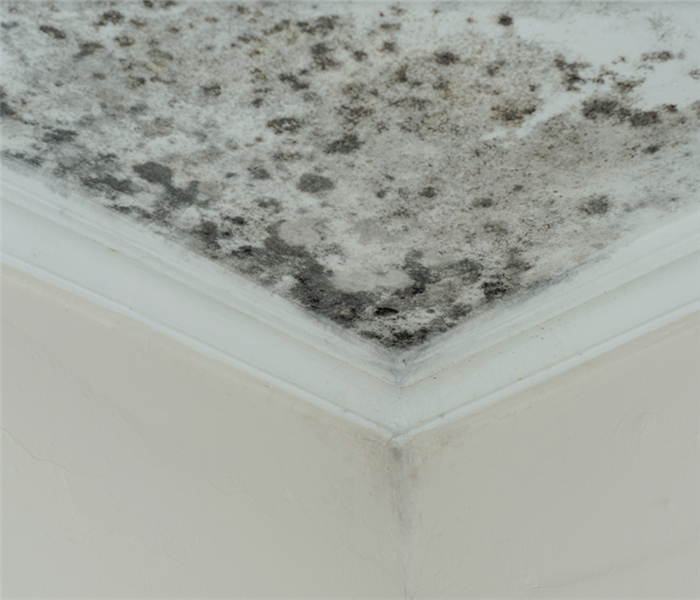 Cleaning up mold damage in your home is a tricky process. Call SERVPRO 24/7 for certified professionals and equipment to take care of the job.
Cleaning up mold damage in your home is a tricky process. Call SERVPRO 24/7 for certified professionals and equipment to take care of the job.
Our Mold Removal Techs Are Experienced & Trained
Individuals who are untrained in mold removal can leave homeowners in Hicksville with active mold colonies or unprotected against future infestations. SERVPRO® invests in the extensive training and in-depth education of our technicians. We instruct them to ensure they become knowledgeable of how microbes destroy different materials and can remediate microbial overgrowth effectively.
While hiring the lowest-priced option might seem like the best way to save money for mold removal services in Hicksville, it's not a sound investment. Trained specialists know the nuances involved when handling a residence's microbial infestation.
Our remediation specialists understand these and other crucial points:
- Cleaning up moldy materials,
- Correcting excess humidity, and
- Applying protective antimicrobials that prevent future infestations.
The mold infesting your home can exhibit different characteristics. Often, a patch of mold is powdery. Disturbing mold (cleaning, moving the item it is on, or bumping it) can cause significant portions of it or its spores to become dislodged. These particles can land on the floor or become airborne, eventually causing new infestations. We prevent all this by building and using special containment apparatus and placing materials to be removed inside doubled bags. We also use machinery equipped with HEPA filters, including vacuums and air scrubbing units.
Elevated moisture always has a cause, and our technicians can quickly locate its reason. It might be a dripping pipe joint, an appliance that has developed a leak, or an area in your residence's envelope that allows rain and other precipitation to seep inside. Ensuring that future moisture levels won't become beneficial for microbes makes their re-infestation less likely.
Applying a protective antimicrobial film to surfaces prone to succumbing to microbes prevents future issues. When we have eliminated excess mold and corrected the humidity in a home, having an environment that is less welcoming to mold can keep any new microbes from colonizing as easily.
A quick call to (516) 733-1800 puts you in touch with the mold experts at SERVPRO of Hicksville / Plainview.
How to get rid of Holiday stains
12/26/2017 (Permalink)
The holidays are many things: Festive, indulgent, an utter mess. And that indulging, as we all have learned one way or another, can wreak havoc on our clothes and table linens.
More than almost any other time of the year, the holidays are packed with special occasion foods and drinks we consume that create particularly egregious stains.
If your holiday festivities result in all new stains, spills and messes you’d rather not bring into 2018, here’s how to clean them all up.
Gravy and Other Greases
The holidays invite a lot of extra grease stains — delicious, buttery, oily grease stains.
When a grease stain happens, such as when pan drippings splatter on your clothes as you transfer the turkey from the roasting pan to its serving tray, massage a small amount of dish soap into the fabric and flush it with cold running water. Dish soap is designed to cut grease and has the built-in benefit of already being in your kitchen with you and your oily stains, making it convenient for spot-treating.
Of course, if a blob of gravy lands on the tablecloth as you’re ladling it all over your mashed potatoes, you shouldn’t be expected to dash to the kitchen. (The potatoes will get cold!) To treat older or more serious grease stains, dab a small amount of Lestoil or Pine Sol on the stain before laundering the item in cold water.
Because a grease stain can be obscured when fabric is wet, it’s best to air dry, rather than machine dry, because the heat can set stains. If the stain lingers after laundering, retreat it the same way and wash again; sometimes a second treatment is all a stubborn stain needs to be coaxed out.
For older, more set-in grease stains or spots on items that can’t be laundered, cornstarch or talcum will pull up the oil. Simply pile it onto the stain and leave it undisturbed for 12 to 24 hours, then brush away the powder and wipe any residue away with a damp rag or sponge.
Potatoes and Other Starches (Including Sweet Potato and Pumpkin)
Starches present a problem because of their tendency to become so glue-like.
Before laundering, scrape as much of the starchy food off the fabric using a butter knife or the edge of a spoon then flush with cool water to reconstitute the dried-on starch. Then, treat with a small amount of dish soap, liquid laundry detergent or a stain pretreatment product and launder.
Whipped Cream and Other Dairy
Dairy should be flushed with cold water then treated with an enzyme-based stain remover (like Zout) and laundered. It’s important to stick with cold water when treating dairy, whether on your clothes or on the dishes, because hot water will cause dairy to become gummy, making it more difficult to wash away.
Coffee and Tea
When a coffee or tea spill happens, start by flushing the area with running water to push as much of the stain out as possible. Then use dish soap and a light-colored rag or sponge to scrub at the stain, which should come out without too much trouble.
Lipstick
If a guest gets lipstick on your good napkins, don’t panic: Good old rubbing alcohol will take it right out. Apply the rubbing alcohol to cotton ball, rag or light-colored sponge and dab at the lipstick stains. Several passes might be required, so be patient.
If the stain has lightened but a bit of pigment remains, apply a small amount of liquid laundry detergent and wash the item in cold water, checking that the stain is completely gone before drying.
For more useful tips on how to get rid of "Holiday stains" refer to the article from The New York Times
Mold during cold weather months
12/13/2017 (Permalink)
The wet season in the winter months is one of the best times of year for molds to grow and expand. Often mold is contained near sources of water where it can easily grow and reproduce. As it grows, mold can breakdown and compromise the integrity and strength of the source in which it lives.
Mold spores are microscopic and are naturally found in the air we breathe indoors and outdoors. Mold can be killed, but if it is not removed properly, it can remain in the area just cleaned and the dry spores can be released into the air. Mold remediation services can help eliminate the mold in your home and personal items affected by water damage.
Prevention, however, is what will help keep your lungs healthy and homes and buildings strong.
General Home and Building Maintenance:
- Keep all areas clean.
- Make sure there is good air circulation. Use an exhaust fan or open a window when showering, cooking, and washing the dishes.
- Prevent mold and water damage by turning off the water flow to broken appliances and pipes.
- Replace cracked or defective mortar in basements. If you find your basement is wet or has water leaking into it, inspect the outside drainage systems.
- Spread moisture-barrier materials in crawl spaces over the soil. Heavy roofing paper or plastic film made of polyethylene can be used for this. Make sure there is good ventilation in the crawl space and, if possible, do not enclose it. One may need to use a fan to blow out humid air from under the building.
- One can get rid of humidity or dampness within a building by heating it for a short time. After heating, open up the doors and windows, or use an exhaust fan, to let out the air that is moist.
- Hire a professional roofing contractor to cover a damaged roof with a tarp or tent. This will help protect the building from the elements.
- If there are freezing temperatures, take measures to insulate pipes inside and out to ensure they will not crack and/or burst.
- Make sure all the seals on the windows and doors are not compromised and in good-working condition.
- Clean and repair roof gutters regularly.
- Make sure the ground around your building slopes away from the foundation so water does not collect around or enter in to it.
- Act quickly if you see condensation on windows, pipes, or walls inside a building. Dry out the area and determine if the source of the condensation is from a leak or the result of high humidity.
After a Flood or Heavy Rains:
- Work fast. Call in a mold remediation service, which will help in the cleaning and disinfecting of your home from toxins and spores mold can release.
- Lower the humidity and temperature in the building: molds do not like these conditions. Open up windows if the air outside is less humid than the air inside. Otherwise, turn on an air conditioner and a dehumidifier.
- Dispose of moldy items in a sealed bag. Objects that can be saved should be frozen (which deactivates mold) or dried out. Mold remediation services can assist with restoring many of your items, including documents, pictures, and books.
- Make sure there is good ventilation within the building affected. Use a fan, if necessary, to promote good air circulation.
- Remove as much standing water in a building as quickly and safely as possible after disconnecting all electronic equipment inside the building.
- The two key things to remember in mold prevention are: 1. Keep everything clean, and 2. Keep everything dry. Many simple steps can be taken to prevent mold damage as well as water damage during the winter months. However, keep the number for a mold remediation service handy should you require their services. These professionals can efficiently and quickly ensure your home is safe, dry, and mold-free.
Types of Mold
11/13/2017 (Permalink)
There are many different mold types that can be found in homes and different health problems can occur depending on the type of mold to which you are exposed. While there are more than one hundred different kinds of mold sometimes found in homes, here we’ll discuss a few of the most common.
Common Types of Mold Found in Homes
Alternaria is often found outdoors, but it also grows in damp places indoors, like in showers or under sinks with leaky pipes. It can also be found in buildings that have been flooded or suffered other water damage. It spreads easily from one area of the home to another. Exposure to alternaria can cause allergic reactions and asthma attacks.
Aspergillus is a type of mold frequently found indoors. It can causes allergic reactions, respiratory infections, and a condition called hypersensitivity pneumonitis, which causes inflammation of the lungs. More about aspergillus mold.
Aureobasidium is a mold often found outdoors, but it can also be found in homes growing on wooden surfaces, wallpaper, and painted surfaces. It’s also often found on damp window frames and caulking. It is pink and black in color. Many people are allergic to aureobasidium. Follow the link for more information on pink mold in the bathroom.
Botrytis grows in areas with high levels of humidity, like bathrooms with poor ventilation. It can cause allergic reactions and asthma.
Chaetomium often grows on drywall, carpets and window frames that have sustained water damage. It produces a characteristic musty odor.
Cladosporium is a type of mold often found growing inside homes. While most types of mold prefer warm climates, cladosporium can grow in cool areas, too. It often grows on fabrics, like carpets, and on wood surfaces, like cabinets and floorboards. It can cause a variety of respiratory problems.
Fusarium is another of the mold types that, like cladosporium, can grow and spread at lower temperatures. It’s often found growing on water-damaged carpeting and other fabrics. It causes allergic reactions, asthma, and respiratory infections. People with compromised immune systems are particularly vulnerable to infections due to fusarium exposure.
Penicillium is often found growing on materials that have been damaged by water, including carpeting, wallpaper, insulation, and furnishings like mattresses. It’s one of the mold types that spread quickly and easily from one part of the home to another. Exposure to penicillium can cause allergic reactions, chronic sinus infections, and inflammation of the lungs. Usually appears as a blue mold and/or a green mold.
Stachybotrys chartarum is often referred to as “black mold” due to its slimy black appearance. It’s sometimes referred to as “toxic mold,” although the mold itself is not toxic; it produces toxic compounds called mycotoxins, which cause health problems when people come in contact with them. It can cause allergic reactions, breathing problems, chronic sinus infections, asthma attacks, fatigue, and depression. Stachybotrys chartarum has a characteristic musty odor and usually grows in places that stay damp all the time, like in air conditioning ducts where there is a lot of condensation or around leaky pipes. Learn more about black mold in homes.
Serpula lacrymans is a yellow mold that causes "dry rot" because it feeds on wood.
Trichoderma is often found growing on damp carpet, wallpaper, and other wet surfaces. It produces mycotoxins similar to those produced by stachybotrys chatarum, and it can cause similar health problems. Many people are also allergic to trichoderma.
Ulocladium requires a lot of water, so it frequently grows in areas with extensive water damage, including homes that have been flooded. It’s often found growing on wet walls. Many people are allergic to ulocladium.
Efflorescence are salt deposits that are often confused with white mold in basement.
Dangers of Mold
9/21/2017 (Permalink)
Understanding Mold
Microscopic mold spores exist almost everywhere, outdoors and indoors, making it impossible to remove all mold from a home or business. Some restoration businesses advertise “mold removal” and even guarantee to remove all mold, which is a fallacy. Consider the following mold facts:
- Mold is present almost everywhere, indoors and outdoors.
- Mold spores are microscopic and float along in the air and may enter your home through windows, doors, or AC/heating systems or even hitch a ride indoors on your clothing or a pet.
- Mold spores thrive on moisture. Mold spores can quickly grow into colonies when exposed to water. These colonies may produce allergens and irritants.
- Before mold remediation can begin, any sources of water or moisture must be addressed. Otherwise, the mold may return.
- Mold often produces a strong, musty odor and can lead you to possible mold problem areas.
- Even higher-than-normal indoor humidity can support mold growth. Keep indoor humidity below 45 percent.
If flood damage is not properly mitigated, lingering moisture from floodwater may elevate the risk of mold growth. SERVPRO of Hicksville/Plainview Professionals can properly remediate mold damage in your home or business. CALL TODAY 516-733-1800
The Issues Air Duct Cleaning Can Help
1/23/2017 (Permalink)
When mold becomes a problem for your business, your HVAC system is often the source of the trouble. HVAC systems can not only contribute to mold growth themselves but also transport mold spores throughout your building.
Mold thrives in warm and damp conditions, with access to ready food sources such as drywall, carpeting or wood. HVAC systems, which include drain pans, coils and piping, are excellent sources of indoor moisture if they are not properly installed, operated and maintained. Once mold spores find a damp location in which to grow, indoor environments usually offer moderate temperatures and plenty of food.
HVAC Duct Cleaning
Understanding Mold
7/13/2016 (Permalink)
Microscopic mold spores exist almost everywhere, outdoors and indoors, making it impossible to remove all mold from a home or business. Some restoration businesses advertise “mold removal” and even guarantee to remove all mold, which is a fallacy. Consider the following mold facts:
Mold is present almost everywhere, indoors and outdoors.Mold spores are microscopic and float along in the air and may enter your home through windows, doors, or AC/heating systems or even hitch a ride indoors on your clothing or a pet.Mold spores thrive on moisture. Mold spores can quickly grow into colonies when exposed to water. These colonies may produce allergens and irritants.Before mold remediation can begin, any sources of water or moisture must be addressed. Otherwise, the mold may return.Mold often produces a strong, musty odor and can lead you to possible mold problem areas.Even higher-than-normal indoor humidity can support mold growth. Keep indoor humidity below 45 percent.Ah, isn't mold quite the sight? Though it is mesmerizing to look at, it can also be toxic for your health. If you're dealing with a mold infestation on your commercial or residential property, call SERVPRO of Hicksville/Plainview. We have the knowledge and tools to make it "Like it never even happened." Call us today. 516-733-1800
Don't Let Mold Grow!
3/3/2016 (Permalink)
Intrusion of water into your home or place of business can result in mold growth. Water intrusions can result from storm damage, plumbing or equipment failures, long-standing leaks and poor humidity control. When water intrusions are not addressed right away, the resulting damage can present increased risk of harmful mold growth. Some amounts of mold spores are normally present in most environments. If the humidity and moisture levels in a water-damaged environment are not promptly returned to normal, mold spores may grow and multiply. Organic materials found inside a building, such as wood, paper, drywall and insulation, provide food sources for mold to flourish. Excessive mold growth can lead to indoor environmental conditions that can cause health effects.
SERVPRO of Hicksville/Plainview handle water damages every day and know prompt action is required to prevent mold growth. Mold is more likely to spread when an environment has been subject to moisture for a long period of time. If your property has sustained recent water damage, it is vital to remove excess water and dry the structure promptly. If there is an ongoing moisture problem in the building, it is important to be alert for:
The presence of visible mold.Strong musty odors which may indicate mold is present.Any evidence of past moisture problems that might have caused undetected mold growth. Excessive humidity.These conditions may require the expertise of a qualified Indoor Air Quality/Environmental Professional to inspect the building for mold growth and water damage problems
If you think you might have a mold problem, call today (631) 476-5300.
Our trained SERVPRO Professionals trained in mold remediation will examine the structure for any visible signs of mold. If extensive mold growth is present, additional assistance may be required. Some situations require the addition of an Indoor Air Quality/ Environmental Professionals with the specialized equipment and services needed to assess and/or repair property. You may wish to consult your adjuster if needed.
SERVPRO cares about proper restoration of your structure. In most water damage situations excessive mold growth is not a problem for your SERVPRO Professionals. We can safely restore your building to pre-loss conditions. The need to address the presence of mold can only be determined by an on-site, indoor environmental inspection.
 Moisture in a laundry room or basement often leads to the removal of walls due to mold growth. SERVPRO helps Syosset homeowners!
Moisture in a laundry room or basement often leads to the removal of walls due to mold growth. SERVPRO helps Syosset homeowners!






 24/7 Emergency Service
24/7 Emergency Service
